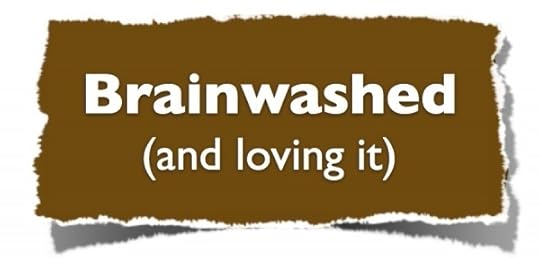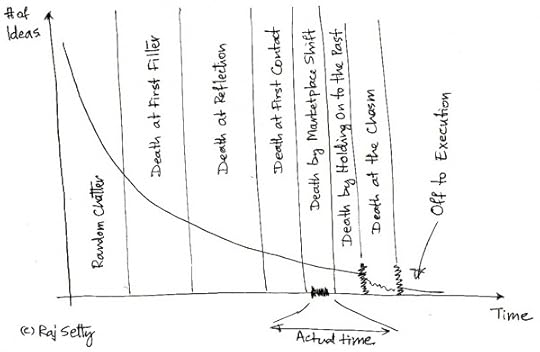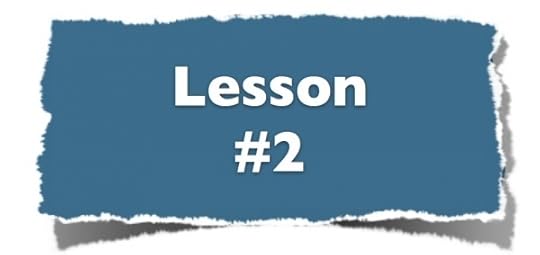Rajesh Setty's Blog, page 9
February 1, 2013
How to Deal with a Masked Narcissist
It is not easy to detect a masked narcissist.
Why?
Well, for one, he or she is masked.
Jokes apart, masked narcissists are all around you and some of them may not even know that they are one of them.
There are subtle signals of narcissism in their talk and behavior.
Here are one example:
Your friend tells you -
“That was a good piece of work. I don’t know how many people will notice it but it was very clear to me that you have something good going there. One has to pay a lot of attention to discover the gem you have created. A keen eye for design is a MUST and I am so glad that I was able to almost instantly get the essence of what you have created.”
When you hear a praise like that, you have a mixed feeling. You know that you heard a praise – the question is did he or she praise you or praise themselves for praising you?
You may not notice this but your body surely will. If what they say don’t lift you and get you energized, you know you have encountered a masked narcissist.
Now, the art of dealing with a masked narcissist
The very first step is to notice that you have encountered one of them. Without that, there is no question of dealing with them.
Once you identify a masked narcissist, think about your previous encounters with them. Is this a one-time occurrence or is there a trend there? If there is a trend, ask yourself, do you want to deal with that person for the rest of your life? It’s an important question because EVERYTHING will be about them for the rest of your lives together.
If you decide that it’s not a trend, then there is a good chance that the person is blind to being a masked narcissist. All you have to do is bring that to notice.
You can say something like this -
“Thanks a ton for your praise. I am glad you noticed it. Some feedback for you because I care – your praise did not come across as a praise to me but mostly as a praise to yourself because you showered a praise on me. I am sure you didn’t mean it that way but I am saying it because that’s how it came across to me on the receiving end. As a friend, I thought it is my duty to share this with you.”
But, please don’t make a big deal about it as you would have already embarrassed them a bit with your observation. Switch over to another topic and move on. It will take them a while to digest this but for sure they will catch themselves next time they engage in such behavior.
Note: If YOU are a masked narcissist, then you know what to do 
Hat Tip: My friend Arun for helping me think through this.







January 27, 2013
How to Sell Your Ideas
Getting new ideas is reasonably easy. Here are ten ideas to get new ideas.
Selling any idea is hard.
First, let us talk about how ideas die prematurely.
How Ideas Die Prematurely
Most ideas die in your mind. In fact, here is an over-simplified representation of the journey of ideas.
1. Random Chatter
You get a lot of ideas and most of them are useless. This is not a bad thing as you need to get a LOT of ideas before some of them turn out to be GOOD ideas. Many ideas here are like mayflies – die extremely quickly
2. Death at First Filter
This is the next stage of elimination where you really give them your real attention and contemplate a bit. However, many ideas here won’t pass through your first filter – you realize very quickly that they were dumb ideas and don’t think about them again.
3. Death on Reflection
These ideas gain a lot more of your attention. But, upon reflection, you realize that they don’t deserve any more attention. You move on from them.
4. Death at First Contact
These ideas are the ones that pass through your first filter and you are confident enough to share them with others – at least with those that are close to you. You are super enthusiastic about these ideas but unfortunately, these ideas won’t survive the first contact of others. Your assumptions are questioned, other failed such attempts are highlighted and the classic – someone has already done it, so why bother?
5. Death by Marketplace Shift
You marinate several ideas in your mind for variety of reasons the most common of which being – you are waiting for the “right conditions” before you make the jump. However, while your marinating your ideas, the marketplace is not waiting for you and shifts happen. Instead of witnessing conditions that support your idea, you notice conditions that make it difficult for you to pursue them. You sadly abandon them.
6. Death by Holding on to the Past
This is where things seem fine externally for you to move forward but you don’t have the confidence to let go of the past and jump head on into the execution phase. Either you kill the idea blaming it on somebody else or simply blaming it on timing.
7. Death in the Chasm
This is where you are ready or at least you think you are ready but you are not able to get buy-in from the people that matter. In other words, you are unable to sell your idea and those unfortunate ideas end up in the chasm.
This article is about crossing the chasm by learning how to sell your ideas
[ Note: Let me set the expectation straight - there is no magic bullet formula to sell any idea. It requires a TON of thinking and varying quantities of luck AND of course timing. ]
Factors that Influence Your Ability to Sell Your ideas
1. Localized Proof
If you can show that your ideas work even with a limited scope, selling your idea for a broader scope becomes easy. In fact, the more stellar your idea is doing in a localized environment, higher the chances of getting it sold for a broader scope. A good example is Khan Academy. It started off with Salman Khan creating videos to help his 12-year old niece pass a math exam. The videos were created without fancy equipment but were very insightful. As they started becoming popular, others (most notable being Bill Gates) came to him. Salman Khan didn’t have to sell his ideas, they got sold on their own because of the awesomeness factor and localized proof.
2. Who you are
When your ideas don’t have a lot of history, your history becomes important. In the minds of others, your past accomplishments or lack there of will influence the odds of success of your new ideas.
3. Who knows you
Note that I didn’t say who you know. You might know a lot of people or at least you think you know them but what matters really is whether you matter enough for them to know you.
4. Your emotional bank balance
If you have a high bank balance on your emotional bank account, you will surely get their mindshare at least to listen to your idea. Ultimately merit of the idea counts but a good opening gives you a competitive advantage for sure.
5. Timing
If your timing is off, then the best ideas have a slim chance of moving forward. On the other hand, if your timing is impeccable, even mediocre (but relevant) ideas get attention.
The Art of Selling Your Idea
Your ability to communicate your idea obviously makes a big difference. You know this but like me, I am sure you too are open to learning a thing or to – to get better at this.
So, here we go.
I termed this concept as “laying the mental breadcrumbs.” It is where you go to a place where your audience is super comfortable with and then keep placing mental breadcrumbs until they come to where you want them to come.
The first step therefore is to know what your audience knows so that requires a bit of homework on your part. Going there will get a first mental nod from your audience probably including an externally visible indicator that you got them.
Now, don’t make the mistake of presenting your main claim right away as that will be too big of a jump for them. Your approach will be to present something that will extend something that they already know – metaphorically placing a mental breadcrumb. If you observe carefully, you will notice an internal nod in their eyes that will show that they have moved to the next step.
Then continue by placing another mental breadcrumb, resulting in another mental nod.
Now continue with another mental breadcrumb and keep repeating until making your claim is the most obvious thing to do. In fact, if you have placed the mental breadcrumbs right, your claim should be a logical conclusion for them to make.
You might even give them the satisfaction of solving a puzzle. Your claim will be the prize they receive for having solved the puzzle.
The Thank You card project for Sankara Eye Foundation by Foresight Plus was designed to sell an idea and happy that it worked out great.







January 12, 2013
Ways to Distinguish Yourself #218 – Look for Lesson #2
Richard Branson (no introduction needed) shares a story from his early entrepreneur days in his book “Business Stripped Bare.”
As most of you know, Richard started his entrepreneurial journey by starting and running the “Student” magazine. One day, Patricia Lambert from the media giant IPC reached out and made an offer to buy the “Student” magazine for 80,000 Pounds PLUS Richard will get a job to continue as editor of the magazine. After thinking through this for a while, Richard decided to sell the company to IPC.
Soon, Richard was in front of the board of directors of IPC where he shares his vision for the company that included Student Holidays, Student Travel Agency, Student Record Shops, Student Health Clubs and even a student airline.
Next day, Richard got a call explaining that the board had changed their mind and the offer was off.
A few years later, Richard got a delightful letter from Patricia, telling how much they were kicking themselves over the years as Virgin conquered sector after sector and became a force to reckon with.
There are so many lessons to be learned here, right? Lesson #1 could include but not limited to:
Opportunity knocks once – capitalize on it
Time and tide wait for none
Be able to spot an opportunity however weird it looks.
Obviously, there is no end to where we can take that argument. Before you get your own imagination run wild, this is what Richard shares in his book as the real lesson – Lesson #2
I suspect they were right in not dealing with me. IPC were and are in the publishing business. They are publishers. They know who they are, and they didn’t need some kid, however promising, telling them all the other things they could be. The last thing they wanted was a wasp in the room, batting itself again their windows and getting more and more frustrated, and that, surely, is what I would have become.
There is a tendency to go on a fantasy path in retrospect. If IPC had agreed and supported Richard’s vision on that day, there was no guarantee that IPC would have reached where Virgin has reached today. But one can always paint that picture and conclude something that can be called as Lesson #1. I call this the premature lesson. There are hundreds of such lessons shared on stage by motivational speakers. They serve the purpose but the real wisdom in many cases is in digging a bit deeper – in looking for lesson #2.
=================
Note 1: Here are links to the other 200 articles in the series
Rajesh Setty: Best of Life Beyond Code – Distinguish Yourself #1 – #50
Rajesh Setty: Best of Life Beyond Code -Distinguish Yourself #51 – #100
Rajesh Setty: Best of Life Beyond Code -Distinguish Yourself #101 – #100
Rajesh Setty: Best of Life Beyond Code -Distinguish Yourself #151 – #200
Note 2: The first 25 entries in the series have been packaged in a ChangeThis manifesto that was published on September 07, 2005. You can download that manifesto here:
ChangeThis Manifesto: 25 Ways to Distinguish Yourself (PDF, Free)
Note 3: My latest manifesto on ChangeThis was published on August 6, 2008. This is a photographic manifesto featuring 15 of my mini sagas (stories in exactly 50 words). Here is the link:
ChangeThis Manifesto: Mini Sagas – Bite Sized Lessons for Life and Business (PDF, Free)







January 11, 2013
How to Stay Calm
Just to be more realistic, let’s slightly modify the topic to
How to Stay Calm (Most of the Time)
as I don’t think there is anyone in my audience who are on the path to becoming a saint 
Let me set the expectations right too – there is no magic pill or magic formula or magic anything that will help you stay calm forever. There is no need for you to pretend as if you are always calm either. I guess it’s really OK to deviate from your “ideal calmness level” every now and then as long as you know how to get back to THAT stage very quickly.
Having said that, let’s dig a little deeper, shall we?
What makes you lose your calmness? It happens in general when
a) You think something will happen but reality is far from it
AND
b) You think the consequence of not meeting your expected outcome is not good for you.
The level of deviation from your ideal calmness therefore will depend on
a) How much is the delta between your expectation and reality
AND
b) How bad you think is the consequence of that deviation
Now, the solution in two steps:
1. Gaining Perspective:
The first step towards a solution is to understand that it is COMMON for reality to have deviations from your expectations – otherwise you won’t be living a life – you will be creating magic. The more you understand it and the more this is embedded in your background thinking, easier it is to enjoy the journey.
Once you have this perspective, it is fun to savor the outcomes without having to constantly compare it with what the expected outcome should be.
I am in no way suggesting that you should not expect an ideal outcome – only drawing your attention to the “ideal” part here. If anything, get obsessed with the input (thinking, effort, mindshare etc.) for a project and the output will take care of itself.
2. Paying the Price for Calmness:
Way before you get to a stage where you can call upon “calmness at will”, you need to pay the price to get there.
And, that price?
Making a LOT of decisions
That might sound simple – but it takes effort to reach a place where you CAN or ALLOWED to make a LOT of decisions.
When you do make a LOT of decisions, a few interesting things will happen:
1. You will get comfortable making decisions – one of the fundamental skills of life
2. You will understand that you will DEFINITELY not get all your decisions right
3. You will learn to handle yourself better when your decisions go wrong
and so on.
With this, you are one step closer to commanding “calmness at will.”
Photo Courtesy: vonCroy on Flickr







January 7, 2013
How to detect if you are slightly brainwashed?
 Ask yourself a few questions below:
Ask yourself a few questions below:
1. Are you open-minded?
2. Are you a team player?
3. Are you a good leader?
4. Are you a quick learner?
5. Are you a lifelong learner?
6. Can you communicate well?
7. Do you come up with good ideas?
8. Are you likeable?
9. Are you passionate about your work?
If you are like most people, your answer to almost all the questions will be Yes. If you are the optimistic kind, your answer to almost all the questions will be a resounding YES!
The trouble starts the moment you say “Yes” to a question like the one above because saying “Yes” seems like the right thing to do. Sometimes it is even fashionable to say that you are open, team player, communicate well etc.
Say it often and soon you will start believing what you are saying and THAT is the onset of self-inflicted brainwashing. Do it some more and you will start doubting those that doubt you.
Let’s take one of the above questions:
Are you a lifelong learner?
If you said the answer is Yes, the follow on question would be
How do you know?
I am not doubting what you are saying but all I am suggesting is that you should doubt yourself until you are proven right.
What if you had a simple way to prove to yourself that you are indeed a lifelong learner?
If you are a lifelong learner, by induction, you should have been learning in the last year. Assuming that you were learning for the whole year with reasonable intensity, how about this challenge?
Right at this moment, you are attending a conference and the keynote speaker is missing due to some last minute issues. They invite you on stage instead and all you have to speak about is what you learned in the last year?
Would you be ready and willing to take up that challenge?
More importantly, would the audience get the value for their time and attention from your speech?
If you want to escape you can answer “Yes” to everything I am asking OR you can take time to reflect and see if you are slightly brainwashed?
You are the only person who knows the answer to this question. If you are indeed brainwashed and get out of it, the first step is to acknowledge and accept the reality.
Have a wonderful year ahead!







January 6, 2013
Dr.Liz Alexander on Co-Authorship
 My friend Dr.Liz Alexander recently co-authored a book called Thought Leadership Tweet. I am a big fan of thought leadership and also the executive editor of THINKaha (publisher of the book) so I will be doubly-biased when I say that the new book is fantastic. Please check it out.
My friend Dr.Liz Alexander recently co-authored a book called Thought Leadership Tweet. I am a big fan of thought leadership and also the executive editor of THINKaha (publisher of the book) so I will be doubly-biased when I say that the new book is fantastic. Please check it out.
What was also fascinating was that Liz co-authored this book with Craig Badings from another part of the world – Australia. Liz and Craig have not met before and the entire process of long-distance collaboration was awesome. In this interview, Liz shares her viewpoints on the book and more importantly co-authorship.
RS: Liz, tell us about your recently published book #ThoughtLeadership Tweet that you co-authored with Craig Badings.
LA: There is so much to think about when it comes to designing and delivering an effective organizational thought leadership campaign, Rajesh, we decided to capture all the necessary elements together in one short, immensely powerful book. By reading the introductory passages and working their way through each of the tweet-sized prompts in each section, readers will ensure they have addressed why they are engaging in a thought leadership campaign, what impact they want it to achieve for their organization, how to arrive at a unique, client-centric point of view, how to measure success – and much more!
RS: You and Craig have never actually met in person, yet you successfully co-authored a book together. How did you come into contact and where did the idea of doing this book come from?
Ah, the joys of serendipity supported by modern technology! I’d become extremely interested in thought leadership, as it was a focus for most of my clients who wanted to write high-impact books that differentiated them from their competition. I began following some of the major players in the thought leadership space, which — of course — included Craig. After some tweeting and emailing back and forth he and I decided to connect on Skype. I was already contracted to write #THOUGHT LEADERSHIP tweet and hadn’t come up with a value-proposition for readers beyond simply collecting quotes about the topic. Craig graciously offered to help me brainstorm ideas and as a result of those interactions we agreed to become co-authors.
Talk about two minds being better than one! We leveraged Craig’s experience with clients to come up with the notion of crafting tweet-sized prompts that offer readers a comprehensive range of questions they need to answer before attempting any organizational thought leadership campaign.
3. Liz, you have written something like 13 books by yourself…why were you open to / interested in co-authorship on this occasion?
Life is all about growth, isn’t it? I’d already proven that I could write and market high selling books internationally. But in some quarters I’d been pegged as a “lone wolf” and wanted to challenge that assumption – to myself as much as anyone else. What better way to do that than by co-authoring a book? Plus, I don’t write simply for the fun of it (although it is fun for me!) but to achieve commercial and critical success. I knew that given Craig’s expertise and experience around thought leadership this book would benefit. Really, it was a no-brainer!
4. How is it that with you in Austin, Texas and Craig in Sydney, Australia you could so happily produce a book together…what were some of your secrets to success?
Mutual respect and leveraging each other’s individual skills and talents, I guess. We talked on Skype about our shared vision for the book, identified what needed to happen to realize that vision, and volunteered to be responsible for those aspects we felt especially qualified to cover. Craig left the “leadership” to me in terms of liaising with the publisher. He drafted the initial framework for the book and then we divided up the various sections according to what we felt most passionate about. I’ve been a professional author for over 25 years so writing the introductory passages was quick and easy for me. Craig used to be an English teacher so he acted as our editor…really, it was a match made in heaven.
You can’t plan relationships like this; you just have to recognize them when you come across them and be prepared to play nicely together in service of that shared vision.
RS: Why is it that so many co-authorship experiences end badly?
Sadly, there are too many reasons to cover here, which is why I invite potential co-authors to read the real-life experiences outlined in this useful blog post.
One piece of advice I would give to anyone thinking of working with a co-author – especially someone they don’t know very well, as was the case with Craig and me – would be to have a contract. This was easy for us because I already had a publishing contract; all we had to do was add Craig’s name and send it over to him to read and sign.
But if you’re not working with a publisher, for goodness sakes draft a contract where everything is above board and you’ve articulated responsibilities and expectations for both parties.
RS: What pointers could you give others thinking about co-authorship, particularly around how best to divide up the workload?
There are things we can do (because we happen to be good at them), and things we love to do (for which we feel passion). I think it’s important to ensure there is a blend of both when undertaking a project like this. Both Craig and I share certain characteristics of curiosity, a love of research and reading, and the desire to write exceptional prose. So it was more a case of determining which particular sub-topics of thought leadership we knew most about and enjoyed explaining. I opted for many of the subjects I teach in the Strategic Communication Certificate Program for The University of Texas at Austin’s Professional Development Center.
RS: Finally, how are you handling the marketing of this book between you?
Craig has strong, international relationships with the individuals he’s interviewed over the years for his blog. So he’s reaching out to those people for testimonials, and to help promote the book. I’m a former freelance journalist interested in which media channels are talking extensively about thought leadership. So my role is to get us covered in major news sources, business magazines and the like.
Plus, we’re lucky enough to have an extremely supportive publisher in THINKaha Books who is prepared to give away a quantity of books to key influencers who can help us get the word out to potential readers. In fact, if anyone reading this post wants to join our team of supporters please get in touch so we can arrange for a free review copy to go to you, and bring you into the conversation around ensuring this book is super-successful!







January 1, 2013
Hate the Curves and Bored with Cruise Control
This is the grand dilemma that many people face – when the roads are curvy, they complain what it takes to navigate all these curves. It seems like they have to pay 100% attention or they might drive off the road. On the other end, they are driving in cruise control on a totally empty freeway in Montana and they get bored. Why? There is not much driving required, actually. There is a pretty good chance that they might fall asleep if they operate on cruise control for a long time. It’s definitely a dilemma.
You guessed it right – the above was just an analogy. I am talking more about how many people approach their work. Closely listen to how they describe their day at work – mostly complaints about the twists and turns that happened in the day. It seems like they are carrying a burden that they would rather not. Externally they might be hinting that they would prefer a job that does not have all these “headaches” caused by twists and turns.
In reality, they don’t wish that.
Why?
Because anything that does not have ups and downs is plain and simple – boring! And no smart person would want to engage in a boring job.
In fact, the real joy of work is in the twists and turns.
It is where the real growth is too.
It is also where you will feel a sense of accomplishment at the end of the journey.
Rather than complaining we should all be happy for the twists and turns – for they are the ones that have the capacity to give us more capacity, joy and sense of accomplishment.
Enjoy the journey in 2013!







December 31, 2012
Distinguish Yourself #217 – Harness the Power of Cues
Take something very basic – a bookmark. It provides a quick way to continue reading your favorite book from where you left off. It is very basic but provides great utility. The alternative is to dog ear the book or do memory magic and remember the page numbers of all the books that you are reading in parallel – not very optimal. In other words, bookmark provides a cue to help you out.
1. Recycle Bin Labels
I was at Barsana Dham at Austin for the new year weekend and couldn’t help notice these recycle bins below:
You will notice two recycle bins – one for the soda cans and one for the plastic bottles – two kinds of drinks that you get at the snack stand. There are labels on top of the recycle bins too clearly telling you where should the cans and bottles go.
Now, what do people do when the see labels?
Skip them.
Yes, they skip reading them because they are busy reading what’s happening in the world via their smartphones. We are living in a world where the choices to get distracted are at an all-time high – that’s another story altogether. The point is that there is a need for another cue beyond the labels on the walls.
Observe the photo and you will notice an empty can tied to one of the recycle bin and a used bottle taped to another recycle bin. Now, does that work. Curious me had to peek in and yes, there was not one bottle in the recycle bin where the cans are supposed to be there and vice versa.
2. Wear and Tear Insurance
This photo shows part of the desk of a finance person at a BMW auto dealership. It’s a coffee spill.
Yes, you guessed it right. It’s really not a coffee spill but a contraption that will appear like a coffee spill – a cue to show that accidents can happen anytime to anyone. Once the cue does it’s job, it becomes easy for the finance person to sell you some insurance 
Cues help brilliantly and they are a MUST in this world where people are hyper-distracted.
Think about your own line of work. What new cues can you provide to people who need them?
=================
Note 1: Here are links to the other 200 articles in the series
Rajesh Setty: Best of Life Beyond Code – Distinguish Yourself #1 – #50
Rajesh Setty: Best of Life Beyond Code -Distinguish Yourself #51 – #100
Rajesh Setty: Best of Life Beyond Code -Distinguish Yourself #101 – #100
Rajesh Setty: Best of Life Beyond Code -Distinguish Yourself #151 – #200
Note 2: The first 25 entries in the series have been packaged in a ChangeThis manifesto that was published on September 07, 2005. You can download that manifesto here:
ChangeThis Manifesto: 25 Ways to Distinguish Yourself (PDF, Free)
Note 3: My latest manifesto on ChangeThis was published on August 6, 2008. This is a photographic manifesto featuring 15 of my mini sagas (stories in exactly 50 words). Here is the link:
ChangeThis Manifesto: Mini Sagas – Bite Sized Lessons for Life and Business (PDF, Free)







December 30, 2012
9 Reasons Why Your New Year Resolutions Fail
First of all, why am I even qualified to talk about this topic? I am just like you – lot of my resolutions have failed and lot of my projects have failed but when I have succeeded small number of times, I have done so with flying colors.
A couple of examples where I succeeded:
1. Yoga: When I learned yoga, I thought I would do this for the rest of my life. It was five years ago and since then I have been practicing it daily. In the last 1500 days or so, I have skipped only two days. I practice it every morning irrespective of where I am – even if I am at an airport somewhere (Hint: In many airports, there are prayer rooms where there is typically no one there)
2. Writing a Novel: A few years ago, I wanted to write a novel – a thriller. I decided to participate in NaNoWriMo so that I hold myself accountable. At NoNoWriMo, you write a complete novel of 50,000 words or more in the month of November. I completed by 65,000 word novel on day 19.
I won’t go into all the failed projects as a blog post will be too small to list everything.
I reflected what made the difference and the list is the result of that reflection.
1. The reason for making the resolutions are not strong enough
The results are easy when the reasons for going after those results are strong and deep. Think about the reasons for making that resolution. If you don’t find good reasons, either go find them or go and find a better resolution.
2. The resolution is not aligned with who you are
If you are connoisseur of fine cuisine and your resolution is related to diet, you will have a hard time to keep it. It’s not impossible but it’s just plain difficult. This happens when you get carried away by looking at resolutions of people around you or common ones that you find on the Internet.
Just being aware of it, will help you know what you are up against.
Always remember that it is YOUR life and the resolutions have to make sense for YOUR life.
3. You have not thought through what it takes to keep the resolution
It’s always fun to imagine the end state of having completed keeping that resolution. Vividly imagine what it takes to keep the resolution rather than basking in the imaginary glory of completed the task. This will better prepare you (mentally) to keep the resolution
4. You have not got the buy-in of the support structure
An old African proverb says, “If you want to go fast, go alone. If you want o go far, go together.” I am assuming your resolution is something that will take you far (otherwise, why make a resolution for that). If you want to go far with your resolution, you need a support structure that can provide good help. Those who can provide good help are busy with their own projects. It is your responsibility to build the relationships to warrant and deserve that kind of help. Typically, this is the biggest reason for resolutions to help – lack of “good” help because we have built enough emotional bank account balance to deserve that kind of help.
[ Download how to build lasting relationships for FREE ]
5. What you become is not compelling enough when you keep the resolution.
Jim Rohn said it brilliantly – “It is not what you get, it is who you become.”
You made up a resolution without properly thinking who you will become if you kept that resolution. Your focus probably was “what you will get.” Reflect on who you will become for sometime and see if that is what you really want. If not, it’s not too late to change the resolution.
6. When the going gets tough, you can come up with really convincing reasons to quit.
The actual saying from Robert Schuller is, “When the going gets tough, the tough get going.” The cop out response is to find really compelling reasons that will convince you and everyone around you that you have super valid reasons to quit. If you can put the same energy and enthusiasm to actually keep yourself going, you would have done a big service to yourself.
[ Find out why some smart people don't take action? ]
7. You get too busy
This is the other way of saying that keeping the resolution was not really on your priority list. Nobody is too busy for things that are of real high-priority. When things lose priority, then you find that you don’t have time to attend to them. Revisit your priorities and see if you can fit that resolution into your high-priority items.
8. The stakes are not big enough
This is similar to the one related to strong enough reasons but slightly different. You can find out what the stakes are by asking yourself the question – “What do i stand to lose if I am not able to keep this resolution?” If the answer is flimsy, then you know that the stakes are not that high.
9. You don’t really believe that you will keep the resolution
Well, as Henry Ford said one – “Whether you think you can, or you think you can’t – you are right.” It starts with your belief. At the core of everything, you have to BELIEVE that you can keep the resolution. You know yourself too well to fool yourself. The best thing to do is to stop kidding yourself when it comes to resolutions and start believing that you CAN keep them. Otherwise, you have lost even before you started.
BONUS Reason: Resolutions are NOT specific.
Examples of cop-out resolutions are as follows:
I want to be a better husband/parent/employee/networker/writer ( You can always get away with any of these things)
I want to improve my financial situation ( Again, you can get away by improving 0.0001%)
You create cop-out resolutions when you don’t want to be held accountable as movement for those results are generally not measurable.
Photo Courtesy: Abhinav Mathur on Flickr







December 29, 2012
Labels You Secretly Love
I am not talking about your Title. If you don’t like it, change what you do or change your job and there is nothing else you can do about it.
I am talking about your internal labels. Labels that you secretly love. Labels that you want others to place on you without you having to speak them out loud.
A few examples
Smart
Funny
Ultra-smart
Uber-creative
Maverick
Iconoclast
Genius
Genuinely likeable
You get the idea. These labels you secretly love are generally (secretly) influence your actions and behaviors.
Criticize too much? May be “smart” is the label you secretly love.
Can’t say “No” to requests easily? May be “likeable” is the label you secretly love.
Rather than trying to change your actions, re-visit the labels you secretly love. Decode them and it gets easier to change your behavior.







Rajesh Setty's Blog
- Rajesh Setty's profile
- 6 followers












